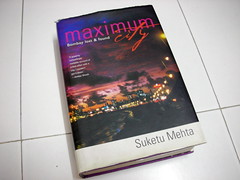How do you use Twitter/Buzz/Facebook?
No no, I’m not late to the party and I’m not asking literally how does one use the above mentioned services. Rather, I’m asking how does one put these various services to use. When do you post something on Twitter but not on Buzz, Facebook but not on Twitter; or do you post everything everywhere (ping.fm style)? I’m not a heavy hitter by any means and my usage of social networks is mediocre at best. Yet I myself confounded with all of the various services and their accompanying warts and virtues. Don’t you?
To help sort out my thoughts, I drew a picture (don’t you dare judge me for my lack of creativity!):

Below I elaborate more on how I currently use each of the services.
- I tend to use it for technical and/or non-personal content. Things that I would want to publicize.
- Unlike Buzz/Facebook, I don’t pay too much attention to who is following me. Most tweets are public anyways.
- The 140 character limit is sometimes amusing, but often irritating. Are people still using regular with Twitter?
- Multiple startups devoted to managing Twitter “noise” is not encouraging.
- @ replies are bandaid. Twitter is a broadcast-and-forget medium — I can’t have (or follow) a conversation on it.
- Use it for sharing random, personal updates (or things I find interesting :p)
- Mostly on because of network effect (read: don’t want to be left off the social bandwagon).
- Like that I can “Like” most things and actually follow the conversation via comments.
- Always worried if my privacy settings are working and if there’s a new “default” I need to worry about.
- Pay more attention to who I friend. The noise level is still quite high despite that.
Buzz
- Usage domain similar to that of Facebook. Unlike Facebook, can choose to make posts Public.
- Love the email integration. Conversely, API/clients still have to catch up to Twitter.
- Supports likes, comments and “resharing”.
- Privacy is modeled around my contacts (chat or otherwise), which seems natural.
I’m fine with using Twitter for all of my public posts. The main confusion lies between Buzz and Facebook. Facebook obviously has more social traction. That said, Buzz is just more convenient to use (because of the email integration mostly). Of course, all of the various connectors available (Twitter <-> Buzz, Twitter <-> Facebook, multicast via ping.fm or Chromedeck etc) make the whole thing even more confusing. At the end of the day, I might just go back to not using anything on a regular basis.
How are you using Twitter, Buzz and Facebook?









